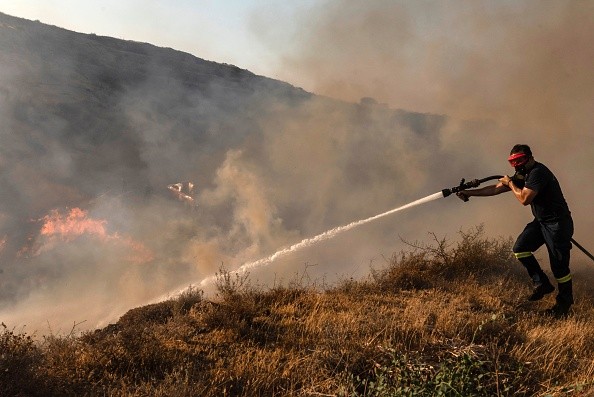Extreme weather events observed during the start of the summer in the Northern Hemisphere include record-high temperatures from Canada to Scandinavia and severe wildfires raging from California to Russia's Far East.

This week, unusual warmth has penetrated well into the Arctic Circle in northern Norway and Finland, regions usually encased in ice and snow for most of the year.
According to local meteorological services, temperatures in many towns north of the Nordic peninsula reached record highs over the weekend. At the same time, Europe's Copernicus organization keeps an eye on exceptional smoke and heat intensity from fires in eastern Russia, the western United States, and British Columbia.
Norway Heat
On Monday, Banak, Norway, hit 94 degrees Fahrenheit (34.3 degrees Celsius). Highs of 93 degrees Fahrenheit (33.7 degrees Celsius) on Sunday and 89 degrees Fahrenheit (31.7 degrees Celsius) on Tuesday accompanied this.
Temperatures of this magnitude are more common at lower (southern) latitudes. In fact, Monday's high of 94 degrees Fahrenheit (34.3 degrees Celsius) tied the year's hottest temperature in Miami, Florida.
High Pressure

"The extraordinary heat was produced by an exceptionally strong ridge of high pressure stretching far to the north and through Scandinavia early this week," said meteorologist Tony Zartman.
From Sunday to Tuesday, temperatures in Kevo, a rural outpost near the town of Utsjoki, reached 91 degrees Fahrenheit (32.8 degrees Celsius) or higher for three days in a row.
Related Article: NASA Reports Earth Has Been Trapping "Unprecedented" Amount of Heat in Energy Imbalance
Melting Ice
The Arctic sea ice has melted quickly due to the unusually mild weather. According to the World Meteorological Organization (WMO), sea ice extent is now among the lowest on record for this time of year.
While the ridge of high pressure that caused the heat has moved towards eastern Europe, Zartman predicts that temperatures will stay significantly higher than average over the region.
"The ridge of high pressure is delivering hot weather all the way from the Balkans to the Baltics," Zartman explained.
According to the World Meteorological Organization, the latest heat wave in northern and eastern Europe comes after the continent experienced its second warmest June on record.
Heat in Europe

Much of Europe was scorched during the record-breaking month of June. On June 21, Moscow set an all-time high temperature of 94.5 degrees Fahrenheit (34.7 degrees Celsius). Since 1901, that record had been kept.
"As this ridge of high pressure diminishes over the weekend, the scorching weather throughout eastern Europe are likely to lessen," Zartman added.
Isolated showers and thunderstorms may also develop in some parts of the continent. However, rainfall will likely be insufficient to alleviate the drought that has plagued southern and eastern Europe since June.
Wildfires

In the western United States and British Columbia, Canada, drought-stricken areas have been ravaged by wildfires early in the season. During the whole month of June, daily fire radiative power, a measure of heat production, was substantially above average in Arizona, releasing smoke pollution into the sky. Satellite images revealed unusually high fire intensity in a small number of extremely intense blazes in British Columbia and California.
Also Read: 5 Tips on How to Survive the Scorching Summer Heat
For more climate and weather updates, don't forget to follow Nature World News!
© 2024 NatureWorldNews.com All rights reserved. Do not reproduce without permission.





